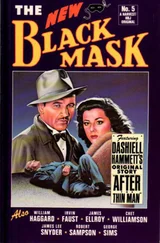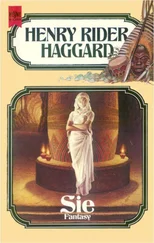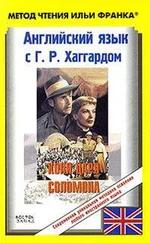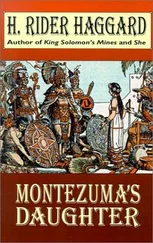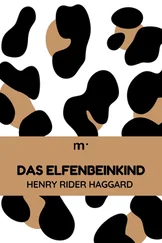When Leo was eighteen I moved back into my rooms, and entered him at my own College, and at twenty-one he took his degree—a respectable degree, but not a very high one. Then it was that I, for the first time, told him something of his own story, and of the mystery that loomed ahead. Of course he was very curious about it, and of course I explained to him that his curiosity could not be gratified at present. After that, to pass the time away, I suggested that he should get himself called to the Bar; and this he did, reading at Cambridge, and only going up to London to eat his dinners.
I had only one trouble about him, and that was that every young woman who came across him, or, if not every one, nearly so, would insist on falling in love with him. Hence arose difficulties which I need not enter into here, though they were troublesome enough at the time. On the whole, he behaved fairly well; I cannot say more than that.
And so the time went by till at last he reached his twenty-fifth birthday, at which date this strange and, in some ways, awful history really begins.
III.
THE SHERD OF AMENARTAS
On the day preceding Leo’s twenty-fifth birthday we both journeyed to London, and extracted the mysterious chest from the bank where I had deposited it twenty years before. It was, I remember, brought up by the same clerk who had taken it down. He perfectly remembered having hidden it away. Had he not done so, he said, he should have had difficulty in finding it, it was so covered up with cobwebs.
In the evening we returned with our precious burden to Cambridge, and I think that we might both of us have given away all the sleep we got that night and not have been much the poorer. At daybreak Leo arrived in my room in a dressing-gown, and suggested that we should at once proceed to business. I scouted the idea as showing an unworthy curiosity. The chest had waited twenty years, I said, so it could very well continue to wait until after breakfast. Accordingly at nine—an unusually sharp nine—we breakfasted; and so occupied was I with my own thoughts that I regret to state that I put a piece of bacon into Leo’s tea in mistake for a lump of sugar. Job, too, to whom the contagion of excitement had, of course, spread, managed to break the handle off my Sèvres china tea-cup, the identical one I believe that Marat had been drinking from just before he was stabbed in his bath.
At last, however, breakfast was cleared away, and Job, at my request, fetched the chest, and placed it upon the table in a somewhat gingerly fashion, as though he mistrusted it. Then he prepared to leave the room.
“Stop a moment, Job,” I said. “If Mr. Leo has no objection, I should prefer to have an independent witness to this business, who can be relied upon to hold his tongue unless he is asked to speak.”
“Certainly, Uncle Horace,” answered Leo; for I had brought him up to call me uncle—though he varied the appellation somewhat disrespectfully by calling me “old fellow,” or even “my avuncular relative.”
Job touched his head, not having a hat on.
“Lock the door, Job,” I said, “and bring me my despatch-box.”
He obeyed, and from the box I took the keys that poor Vincey, Leo’s father, had given me on the night of his death. There were three of them; the largest a comparatively modern key, the second an exceedingly ancient one, and the third entirely unlike anything of the sort that we had ever seen before, being fashioned apparently from a strip of solid silver, with a bar placed across to serve as a handle, and leaving some nicks cut in the edge of the bar. It was more like a model of an antediluvian railway key than anything else.
“Now are you both ready?” I said, as people do when they are going to fire a mine. There was no answer, so I took the big key, rubbed some salad oil into the wards, and after one or two bad shots, for my hands were shaking, managed to fit it, and shoot the lock. Leo bent over and caught the massive lid in both his hands, and with an effort, for the hinges had rusted, forced it back. Its removal revealed another case covered with dust. This we extracted from the iron chest without any difficulty, and removed the accumulated filth of years from it with a clothes-brush.
It was, or appeared to be, of ebony, or some such close-grained black wood, and was bound in every direction with flat bands of iron. Its antiquity must have been extreme, for the dense heavy wood was in parts actually commencing to crumble from age.
“Now for it,” I said, inserting the second key.
Job and Leo bent forward in breathless silence. The key turned, and I flung back the lid, and uttered an exclamation, and no wonder, for inside the ebony case was a magnificent silver casket, about twelve inches square by eight high. It appeared to be of Egyptian workmanship, and the four legs were formed of Sphinxes, and the dome-shaped cover was also surmounted by a Sphinx. The casket was of course much tarnished and dinted with age, but otherwise in fairly sound condition.
I drew it out and set it on the table, and then, in the midst of the most perfect silence, I inserted the strange-looking silver key, and pressed this way and that until at last the lock yielded, and the casket stood before us. It was filled to the brim with some brown shredded material, more like vegetable fibre than paper, the nature of which I have never been able to discover. This I carefully removed to the depth of some three inches, when I came to a letter enclosed in an ordinary modern-looking envelope, and addressed in the handwriting of my dead friend Vincey.
“ To my son Leo, should he live to open this casket. ”
I handed the letter to Leo, who glanced at the envelope, and then put it down upon the table, making a motion to me to go on emptying the casket.
The next thing that I found was a parchment carefully rolled up. I unrolled it, and seeing that it was also in Vincey’s handwriting, and headed, “Translation of the Uncial Greek Writing on the Potsherd,” put it down by the letter. Then followed another ancient roll of parchment, that had become yellow and crinkled with the passage of years. This I also unrolled. It was likewise a translation of the same Greek original, but into black-letter Latin, which at the first glance from the style and character appeared to me to date from somewhere about the beginning of the sixteenth century. Immediately beneath this roll was something hard and heavy, wrapped up in yellow linen, and reposing upon another layer of the fibrous material. Slowly and carefully we unrolled the linen, exposing to view a very large but undoubtedly ancient potsherd of a dirty yellow colour! This potsherd had in my judgment, once been a part of an ordinary amphora of medium size. For the rest, it measured ten and a half inches in length by seven in width, was about a quarter of an inch thick, and densely covered on the convex side that lay towards the bottom of the box with writing in the later uncial Greek character, faded here and there, but for the most part perfectly legible, the inscription having evidently been executed with the greatest care, and by means of a reed pen, such as the ancients often used. I must not forget to mention that in some remote age this wonderful fragment had been broken in two, and rejoined by means of cement and eight long rivets. Also there were numerous inscriptions on the inner side, but these were of the most erratic character, and had clearly been made by different hands and in many different ages, and of them, together with the writings on the parchments, I shall have to speak presently.
[Illustration]
FACSIMILE OF THE SHERD OF AMENARTAS
One 1/2 size
Greatest length of the original 10½ inches
Greatest breadth 7 inches
Weight 1lb 5½ oz
Читать дальше


